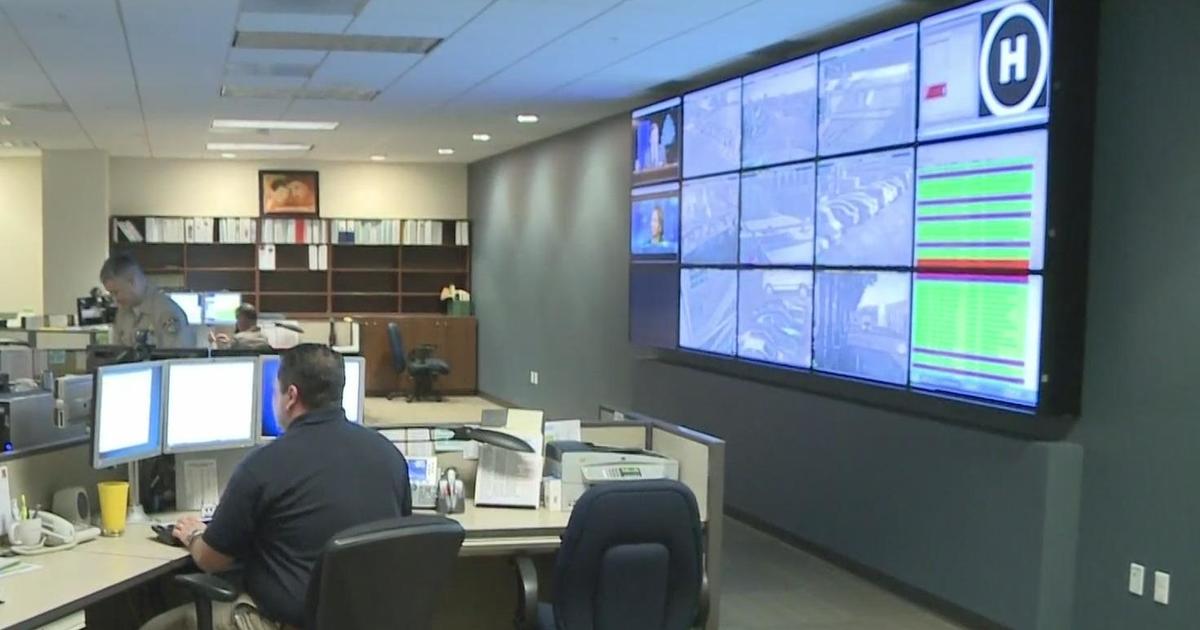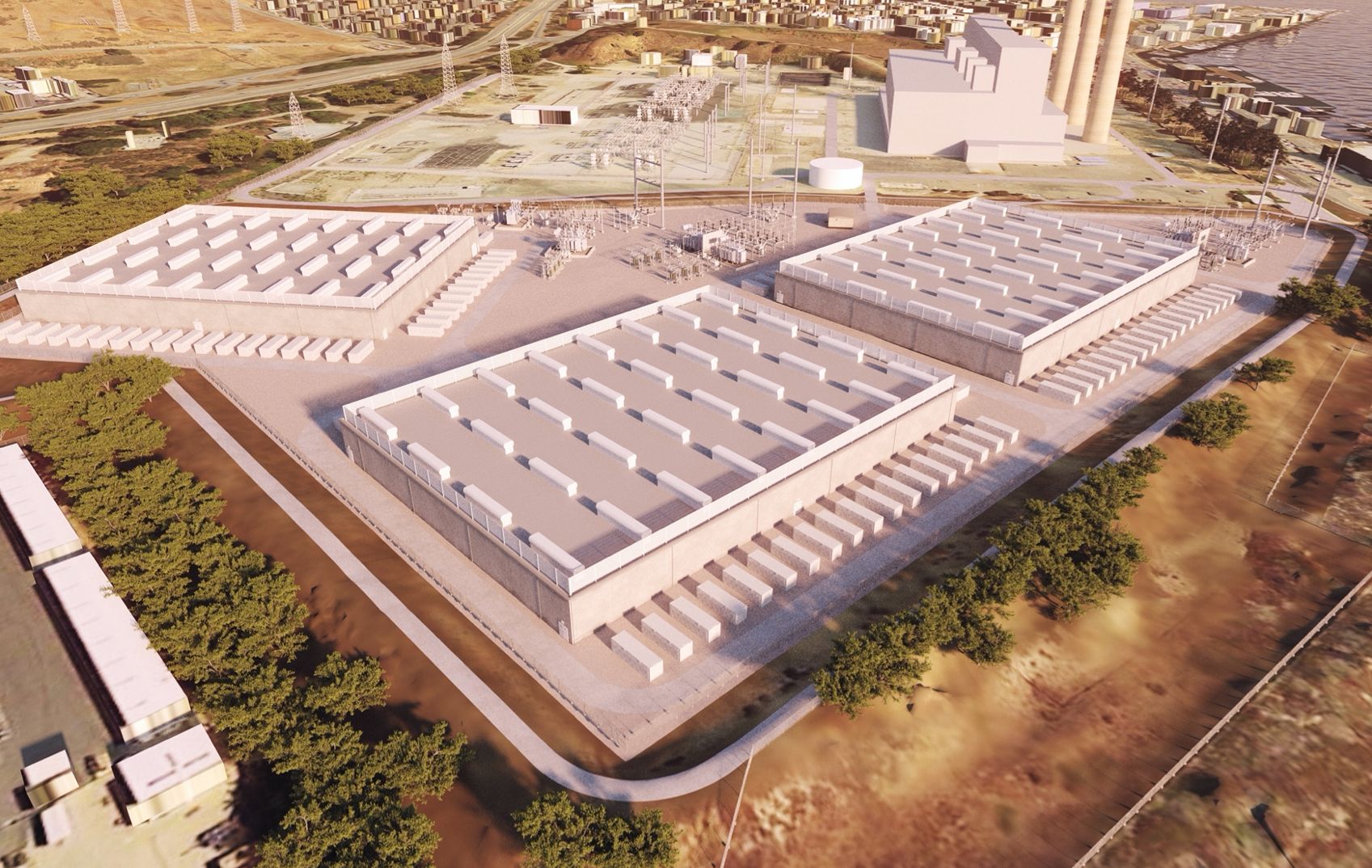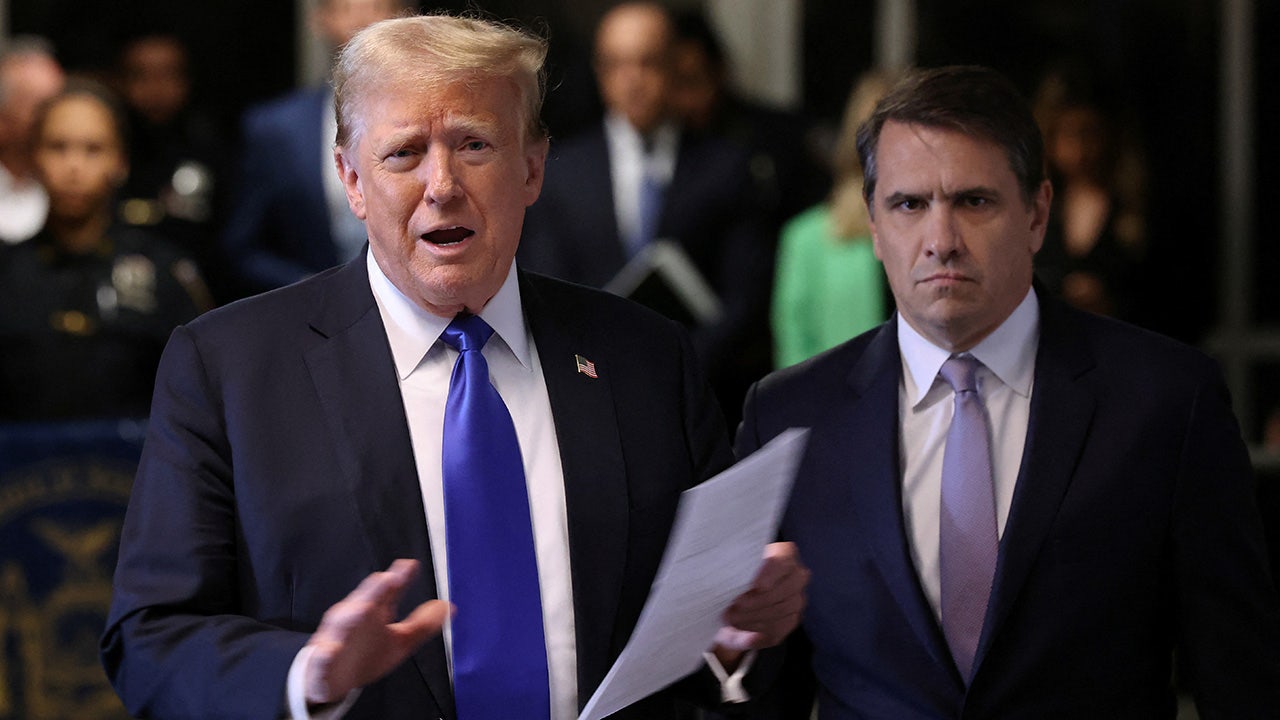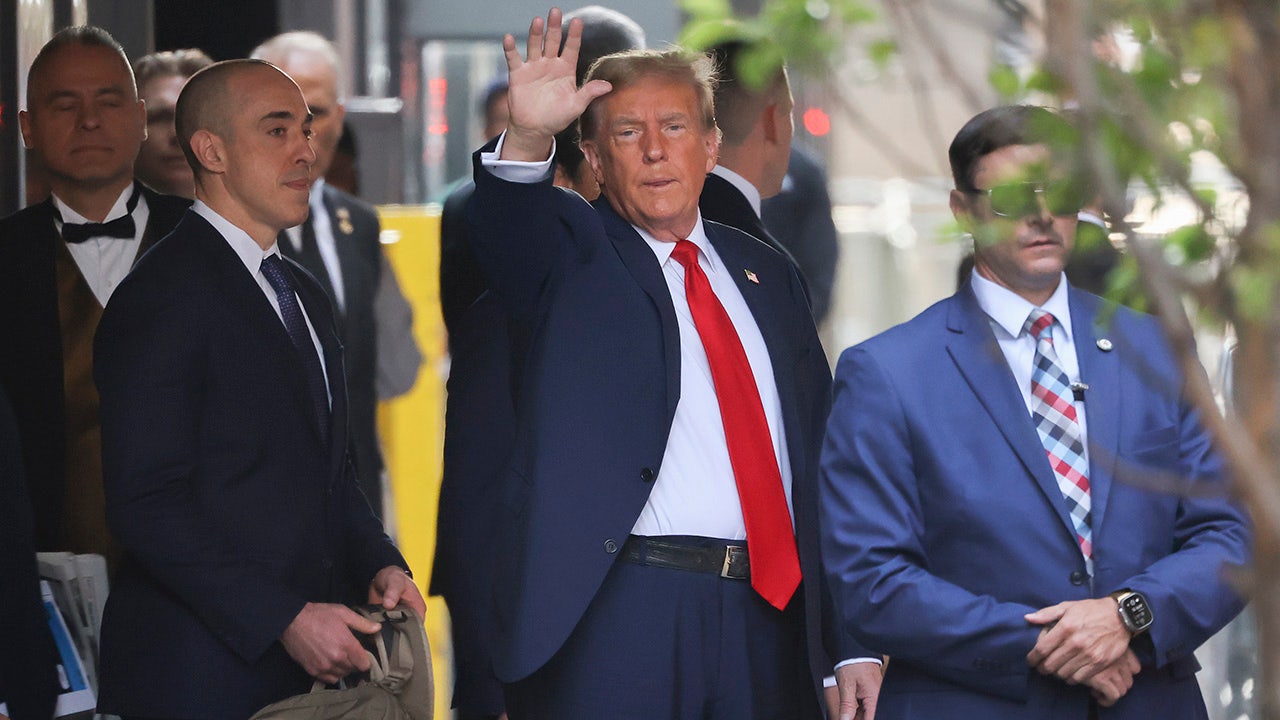California
California’s new tool aims to help track down missing Black youth

SACRAMENTO — California Governor Gavin Newsom has signed a new law that can help track down young people of color who have disappeared.
Amber Alerts have been around for two decades. Since that time, more than 370 children and at-risk individuals have been located. However, some critics say African Americans are often overlooked by the notification system.
“You see the difference of when White girls go missing and Black girls go missing,” said Berry Accius, the founder of Voice of the Youth. “The sense of urgency is not there.”
“African Americans, whether they are children or young adults, are often listed as runaways,” said California Senator Steven Bradford (D-Gardena).
Sen. Bradford is the author of a new law that creates Ebony Alerts for a community disproportionately impacted by missing youth.
“African American young individuals make up almost 40% of those individuals who come up missing,” he said.
“It’s going to put significant change in how we react, how we respond,” Accius said.
Accius said many young women who vanish end up being victims of sex trafficking.
“Here in Sacramento, a lot of our girls get exploited and that’s the major concern for me,” he said.
In addition to Amber Alerts, California also has Blue Alerts for suspects who attack a law enforcement office, Silver Alerts for missing seniors and people with disabilities, and Feather Alerts for missing indigenous people.
So how is an Ebony Alert different?
“Expanding the age from 12 to 25 because right now, an Amber Alert is for 17 years or younger,” Sen. Bradford said.
Black youth considered at-risk or with mental or physical challenges will qualify.
Ebony Alerts can also use technology like roadside signs and electronic notifications.
“With this, the attention, the need, the urgency I feel will be met and it’s going to be a game changer,” Accius said.
The California Highway Patrol and the state Office of Emergency Services will now work on getting the program started. The alert system takes effect on January 1, 2024.

California
California advances measures targeting AI discrimination and sexually abusive deepfakes

SACRAMENTO, Calif. (AP) — As corporations increasingly weave artificial intelligence technologies into the daily lives of Americans, California lawmakers want to build public trust, fight algorithmic discrimination and outlaw deepfakes that involve elections or pornography.
The efforts in California — home to many of the world’s biggest AI companies — could pave the way for AI regulations across the country. The United States is already behind Europe in regulating AI to limit risks, lawmakers and experts say, and the rapidly growing technology is raising concerns about job loss, misinformation, invasions of privacy and automation bias.
READ MORE: Tech giants sign voluntary accord to combat election deepfakes generated with AI
A slew of proposals aimed at addressing those concerns advanced last week, but must win the other chamber’s approval before arriving at Gov. Gavin Newsom’s desk. The Democratic governor has promoted California as an early adopter as well as regulator, saying the state could soon deploy generative AI tools to address highway congestion, make roads safer and provide tax guidance, even as his administration considers new rules against AI discrimination in hiring practices.
With strong privacy laws already in place, California is in a better position to enact impactful regulations than other states with large AI interests, such as New York, said Tatiana Rice, deputy director of the Future of Privacy Forum, a nonprofit that works with lawmakers on technology and privacy proposals.
“You need a data privacy law to be able to pass an AI law,” Rice said. “We’re still kind of paying attention to what New York is doing, but I would put more bets on California.”
California lawmakers said they cannot wait to act, citing hard lessons they learned from failing to reign in social media companies when they might have had a chance. But they also want to continue attracting AI companies to the state.
Here’s a closer look at California’s proposals:
Fighting AI discrimination and building public trust
Some companies, including hospitals, already use AI models to define decisions about hiring, housing and medical options for millions of Americans without much oversight. Up to 83% of employers are using AI to help in hiring, according to the U.S. Equal Employment Opportunity Commission. How those algorithms work largely remains a mystery.
One of the most ambitious AI measures in California this year would pull back the curtains on these models by establishing an oversight framework to prevent bias and discrimination. It would require companies using AI tools to participate in decisions that determine results and to inform people affected when AI is used. AI developers would have to routinely make internal assessments of their models for bias. And the state attorney general would have authority to investigate reports of discriminating models and impose fines of $10,000 per violation.
AI companies also might soon be required to start disclosing what data they’re using to train their models.
Protecting jobs and likeness
Inspired by the months-long Hollywood actors strike last year, a California lawmaker wants to protect workers from being replaced by their AI-generated clones — a major point of contention in contract negotiations.
The proposal, backed by the California Labor Federation, would let performers back out of existing contracts if vague language might allow studios to freely use AI to digitally clone their voices and likeness. It would also require that performers be represented by an attorney or union representative when signing new “voice and likeness” contracts.
California may also create penalties for digitally cloning dead people without the consent of their estate, citing the case of a media company that produced a fake, AI-generated hourlong comedy special to recreate the late comedian George Carlin’s style and material without his estate’s permission.
Regulating powerful generative AI systems
Real-world risks abound as generative AI creates new content such as text, audio and photos in response to prompts. So lawmakers are considering requiring guardrails around “extremely large” AI systems that have the potential to spit out instructions for creating disasters — such as building chemical weapons or assisting in cyberattacks — that could cause at least $500 million in damages. It would require such models to have a built-in “kill switch,” among other things.
The measure, supported by some of the most renowned AI researchers, would also create a new state agency to oversee developers and provide best practices, including for still-more powerful models that don’t yet exist. The state attorney general also would be able to pursue legal actions in case of violations.
Banning deepfakes involving politics or pornography
A bipartisan coalition seeks to facilitate prosecuting people who use AI tools to create images of child sexual abuse. Current law does not allow district attorneys to go after people who possess or distribute AI-generated child sexual abuse images if the materials are not depicting a real person, law enforcement said.
A host of Democratic lawmakers are also backing a bill tackling election deepfakes, citing concerns after AI-generated robocalls mimicked President Joe Biden’s voice ahead of New Hampshire’s recent presidential primary. The proposal would ban “materially deceptive” deepfakes related to elections in political mailers, robocalls and TV ads 120 days before Election Day and 60 days thereafter. Another proposal would require social media platforms to label any election-related posts created by AI.
California
$600 million battery storage project meets resistance in California

An artist’s conception of the proposed battery storage project, formerly the site of the power plant’s tank farm. Image courtesy of Vistra Corp.
Editor’s note: This story was originally published by Inside Climate News. It appears here as part of the Climate Desk collaboration.
By some criteria, 1290 Embarcadero in Morro Bay, Calif. seems like a prime site for a facility to store renewable energy.
This swath of coastal land houses a power plant that was shuttered a decade ago and its still standing smokestacks. Vistra Corp.’s proposal for a 600-megawatt battery storage project on a portion of the site includes remediating the entire area and removing the plant and stacks, readying the land for future development. And the site’s history as a power plant means it’s well-positioned to connect to existing transmission lines.
“The location is fantastic, and certainly the need is there in the California grid,” said Mark McDaniels, Vistra’s vice president of renewables and storage, at an April 24 community meeting.
But some locals in the small city on California’s Central Coast disagree, and placed a measure on the ballot this fall that could impact the project’s future. Project opponents say they’re concerned about its impacts on tourism and the potential for fires at the facility, with one resident calling the proposal a “toxic bomb” during the meeting.
California recently surpassed 10,000 megawatts of battery storage capacity, marking a 1,250 percent increase since 2019. At one point on April 19, batteries were the largest source of power to the state’s grid for the first time. And in the inland Southern California town of Menifee, a 680-megawatt storage project replacing an old gas plant will be among the largest battery reserves in the United States.
California draws a growing share of its electricity from the sun during the day, but the sun sets as Californians come home from work and turn the lights on, creating demand that usually must be filled by fossil fuels. Battery storage allows power companies to generated by solar panels and windmills for when the sun isn’t shining and breezes are calm.
The state still will need nearly 42,000 additional megawatts of energy storage capacity by 2045 to meet its goal of using 100-percent clean electricity that year. But in some communities like Morro Bay, proposed storage projects have been met with heated opposition.
This local pushback demonstrates the tension between the desire for “really high quality local permitting” and the state’s push for “really rapid transformation of the whole electricity grid and rapid deployment of energy storage,” which will require the speedy issuing of permits, said Mariko Geronimo Aydin, co-founder and chief energy economist at Lumen Energy Strategy, which last year completed an analysis of the state of battery storage in the state for the California Public Utilities Commission.
“I think ultimately, we want to have both; we don’t want one at the expense of the other,” said Geronimo Aydin.
Vistra Corp. proposed the Morro Bay battery storage project in 2020, and the project is currently in the draft environmental impact report stage, with that document open for public comments through the end of May. The project is awaiting consideration by the city’s planning commission and city council.
But the ballot measure put forth by local opposition group Citizens for Estero Bay Preservation would reroute that process by requiring approval by a majority of voters. Last year, the group gathered enough signatures—10 percent of the city’s registered voters—to place Measure A-24 on the ballot.
Back in 2021, the city changed the land-use designation of the shuttered power plant from “Industrial” to “Visitor Serving/Commercial,” and for the energy storage project to move forward, the city council would need to vote to change the designation to again allow industrial uses. If the ballot measure is approved, it would freeze the current land-use designation of the property and a few others in the area and then require a majority of voters to approve another change in the land-use designation.
“We felt that kind of facility basically in the center of our tourist area is inappropriate. Our whole town is based on the tourism economy,” said Barry Branin, a member of the group behind the ballot measure.
Instead, he says the battery storage project should go somewhere more inland in the agricultural valleys east of Morro Bay, or “out in the middle of the desert somewhere,” near existing renewable energy projects.
“All of the people from the valley like to come to Morro Bay, and if I knew there was going to be a battery facility. . . I wouldn’t want to bring my family to Morro Rock,” said Branin. “So why deprive the rest of the state of the use of the coast for some economic reason?”
Branin also argues that inland residents use more air conditioning than people living on the coast, so “the batteries should be near the users who have the air conditioners that are really demanding the electricity (at night).”
The argument underlies a key intersection of California’s climate and housing crises: For years, housing development has stagnated along the generally wealthier coasts as residents resist new development, pushing more Californians inland to communities at higher risk of extreme heat events.
Vistra says the project would support both the state’s energy needs and the local community.
“Our proposed plan puts ratepayers and residents of Morro Bay first by utilizing pre-existing interconnection infrastructure, while allowing for the eventual master planning and redevelopment of the remaining property to improve the Embarcadero area and allow for increased public access for the benefit of future generations,” reads a statement attributed to Claudia Morrow, senior vice president of development for Vistra.
And not building large-scale storage at sites with existing transmission infrastructure like the former power plant in Morro Bay “would lead to higher costs for the electricity system as a whole,” said Geronimo Aydin.
Citizens for Estero Bay also cites concerns over potential fires at the battery facility, pointing to the nearby example of Vistra’s Moss Landing in Monterey County, where in September 2022 a faulty smoke detector triggered water releases on the battery racks, which caused short circuits. The facility was then offline for months.
A community safety report commissioned by Vistra for the Morro Bay project found “no significant risk to the community,” determining that if a fire burned at the facility while wind blew the emissions toward nearby homes, the fire wouldn’t release enough toxins to cause a significant health risk. But that’s done little to quell concerns from community members, who filed into a recent community meeting holding up blue “Yes on Measure A-24 signs.”
Safety events at battery storage facilities are “relatively rare” across the United States, impacting between 1 to 2 percent of systems, and tend to occur in the first couple years of operation, according to Geronimo Aydin. The estimate applies to the industry “while it was in its pilot and demonstration phase,” and she says the industry has since standardized and improved safety best practices. But clearly and accurately communicating the potential risks to local residents and other stakeholders is still a big barrier for the industry.
“Now we’re at a position where safety risks and how to manage them are very well understood by those who work in the space, but the challenge now is to communicate exactly what that risk is, that it’s manageable risk and how to manage it,” said Geronimo Aydin.
Branin says he’s confident the ballot measure will succeed. But new legislation that allows large battery storage facilities to opt in to an approval process from the California Energy Commission (CEC), instead of going through a local process, could provide a backup pathway to Vistra.
Vistra didn’t respond to questions about how the ballot measure might impact the project, and at the April 24 community meeting a Vistra representative only said the company is focused on the project and the current process from the city.
“The applicant says they’re committed to the city’s process, and we’re working with them in good faith on that,” said Michael Codron, the city’s interim director of community development. “If the city’s process results in a denial or if the ballot measure precludes the ability of the city council to approve the application, I would think they would avail themselves of the CEC process.”

California
An ex-California official quietly stole over $1.5 million of water in a heist that lasted decades, but mysteries remain
A former California official pleaded guilty to conspiring to steal more than $1.5 million of water, but the decadeslong water heist case still has more questions than answers.
Dennis Falaschi served as the general manager of the Panoche Water District in Fresno and Merced Counties, located in central California, from around 1986 to 2017. The public water district bought water from the federal government and collected drainage water from farms, both of which it then legally sold to farmers in the area, according to a statement issued by the US attorney’s office for the Eastern District of California on Tuesday.
But after Falaschi discovered some of the federally owned water was leaking from an old pipe into a separate canal, the pipe was modified so it could be open and closed, allowing water to be taken “on demand,” prosecutors said.
The US attorney said Falaschi was responsible for stealing somewhere between $1.5 million and $3.5 million worth of water. Prosecutors also said that between 2011 and 2016 Falaschi was paid for water that he had sourced legally, but he did not report the income on his tax returns.
In a plea agreement filed Thursday, Falaschi pleaded guilty to one count of conspiring to take federally owned water and one count of filing a false tax return.
A lawyer for Falaschi did not respond to a request for comment from Business Insider. His sentencing is set for September.
While the plea provides some answers, many questions remain in the case that farmers in the San Joaquin Valley have been watching for years.
When Falaschi was indicted in 2022, prosecutors painted him as the mastermind of a plot that lasted from around 1992 to 2015 in which more than $25,000,000 worth of water was stolen from the federal government, or more than 130,000 acre-feet of water.
The indictment said proceeds from the theft, which should’ve gone to the federal government, instead when to Falaschi and eight co-conspirators in the form of “exorbitant salaries, fringe benefits, and personal expense reimbursements.”
The Los Angeles Times, which published a deep-dive into the alleged heist in April, reported that while some farmers were angry with Falaschi, others described him as the “Robin Hood of irrigation,” ensuring they could get the water they needed.
Falaschi’s plea agreement claims he’s responsible for stealing only a fraction of the original $25 million prosecutors accused him of taking in the original indictment. The plea agreement also said Falaschi was one of several people involved in the misconduct and that he was unaware of the full extent of the misconduct.
Of the water Falaschi took, the plea agreement said almost all of it was taken to “blend down and reuse drainage water, which helped protect farmland and improve water quality in the San Joaquin River.”
“The improved water quality contributed to the San Joaquin River being removed from the list of impaired waters under California’s Clean Water Act,” the plea agreement said, adding, “There was no evidence that Mr. Falaschi directly benefitted from the misconduct.”
The Times reported the plea raises even more questions about who was stealing the water, who was making money off of it, and why it took the federal government so long to notice.
The mystery surrounding the case continues as water use in the state coms under increasing scrutiny, with droughts and water shortages forcing California officials to reconsider how water is used and allotted.
-

 Culture1 week ago
Culture1 week agoFrom Dairy Daddies to Trash Pandas: How branding creates fans for lower-league baseball teams
-

 News1 week ago
News1 week agoRed Lobster files for bankruptcy after missteps including all-you-can-eat shrimp
-

 News1 week ago
News1 week agoThe states where abortion is on the ballot in November : Consider This from NPR
-

 Politics1 week ago
Politics1 week agoMichael Cohen swore he had nothing derogatory on Trump, his ex-lawyer says – another lie – as testimony ends
-

 News1 week ago
News1 week agoRead Prosecutors’ Filing on Mar-a-Lago Evidence in Trump Documents Case
-

 Science1 week ago
Science1 week agoPregnant? Researchers want you to know something about fluoride
-
News1 week ago
Trump's social media account shares a campaign video with a headline about a 'unified Reich'
-

 Politics1 week ago
Politics1 week agoAnti-Israel agitators interrupt Blinken Senate testimony, hauled out by Capitol police



















